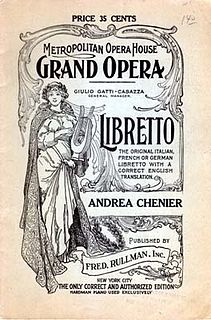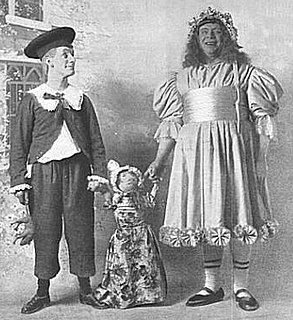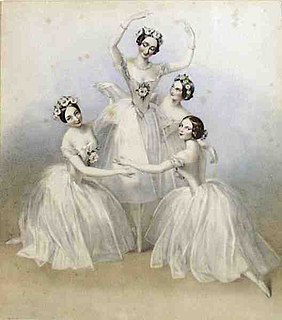 W
WMusical theatre is a form of theatrical performance that combines songs, spoken dialogue, acting and dance. The story and emotional content of a musical – humor, pathos, love, anger – are communicated through words, music, movement and technical aspects of the entertainment as an integrated whole. Although musical theatre overlaps with other theatrical forms like opera and dance, it may be distinguished by the equal importance given to the music as compared with the dialogue, movement and other elements. Since the early 20th century, musical theatre stage works have generally been called, simply, musicals.
 W
WBhavai, also known as Vesha or Swang, is a popular folk theatre form of western India, especially in Gujarat.
 W
WBroadway theatre, also simply known as Broadway, refers to the theatrical performances which are presented in the 41 professional theatres, each with 500 or more seats, located in the Theater District and the Lincoln Center along Broadway, in Midtown Manhattan, New York City. Broadway and London's West End together represent the highest commercial level of live theater in the English-speaking world.
 W
WA burlesque is a literary, dramatic or musical work intended to cause laughter by caricaturing the manner or spirit of serious works, or by ludicrous treatment of their subjects. The word derives from the Italian burlesco, which, in turn, is derived from the Italian burla – a joke, ridicule or mockery.
 W
WA chorus line is a large group of dancers who together perform synchronized routines, usually in musical theatre. Sometimes, singing is also performed.
 W
WCine-variety is a form of entertainment with a mix of variety acts performing in between the showing of films all for the price of one admission fee. It was popular in the United Kingdom and Ireland between 1900 and the 1930s. Cine-variety was used to keep stage comedians in work during the early days of silent films and talking films.
 W
WA concert performance or concert version is a performance of a musical theater or opera in concert form, without set design or costumes, and mostly without theatrical interaction between singers.
 W
WDevelopment of musical theatre refers to the historical development of theatrical performance combined with music that culminated in the integrated form of modern musical theatre that combines songs, spoken dialogue, acting and dance. Although music has been a part of dramatic presentations since ancient times, modern Western musical theatre developed from several lines of antecedents that evolved over several centuries through the 18th century when the Ballad Opera and pantomime emerged in England and its colonies as the most popular forms of musical entertainment.
 W
WA dream ballet, in musical theater, is an all-dance, no-singing production number that reflects the themes of the production. The plot, themes, and characters are typically the same—although the people playing the characters may be different, as the roles of the dream ballet are usually filled by well-trained dancers rather than actual actors.
 W
WEdwardian musical comedy was a form of British musical theatre that extended beyond the reign of King Edward VII in both directions, beginning in the early 1890s, when the Gilbert and Sullivan operas' dominance had ended, until the rise of the American musicals by Jerome Kern, Rodgers and Hart, George Gershwin and Cole Porter following the First World War.
 W
WAn extravaganza is a literary or musical work characterized by freedom of style and structure and usually containing elements of burlesque, pantomime, music hall and parody. It sometimes also has elements of cabaret, circus, revue, variety, vaudeville and mime. Extravaganza may more broadly refer to an elaborate, spectacular, and expensive theatrical production.
 W
WFolk plays such as Hoodening, Guising, Mummers Play and Soul Caking are generally verse sketches performed in countryside pubs in European countries, private houses or the open air, at set times of the year such as the Winter or Summer solstices or Christmas and New Year. Many have long traditions, although they are frequently updated to retain their relevance for modern audiences.
 W
WGaiety Girls were the chorus girls in Edwardian musical comedies, beginning in the 1890s at the Gaiety Theatre, London, in the shows produced by George Edwardes. The popularity of this genre of musical theatre depended, in part, on the beautiful dancing corps of "Gaiety Girls" appearing onstage in bathing attire and in the latest fashions. The 1890s Gaiety Girls were respectable, elegant young ladies, unlike the corseted actresses from London's earlier musical burlesques. Later, even the stars of these musical comedies were referred to as Gaiety Girls.
 W
WJatra is a popular folk-theatre form of Odia theatre, Bengali theatre, spread throughout most of Odia, Bengali speaking areas of the Indian subcontinent, including Bangladesh and Indian states of Odisha, West Bengal, Bihar, Assam and Tripura As of 2005, there were some 55 troupes based in Calcutta's old Jatra district, Chitpur Road, and all together, jatra is a $21m-a-year industry, performed on nearly 4,000 stages in West Bengal alone, where in 2001, over 300 companies employed over 20,000 people, more than the local film industry and urban theatre.
 W
WA libretto is the text used in, or intended for, an extended musical work such as an opera, operetta, masque, oratorio, cantata or musical. The term libretto is also sometimes used to refer to the text of major liturgical works, such as the Mass, requiem and sacred cantata, or the story line of a ballet.
 W
WMaach is a form of folk theatre from the Malwa region of the Indian state of Madhya Pradesh.
 W
WMascherato is a musical with music, lyrics and original story by Michael Elderkin and book by James Willett.
 W
WThe Nāṭya Śāstra is a Sanskrit treatise on the performing arts. The text is attributed to sage Bharata Muni, and its first complete compilation is dated to between 200 BCE and 200 CE, but estimates vary between 500 BCE and 500 CE.
 W
WNautanki is one of the most popular folk performance forms of South Asia, particularly in northern India. Before the advent of Bollywood, Nautanki was the biggest entertainment medium in the villages and towns of northern India. Nautanki's rich musical compositions and humorous, entertaining storylines hold a strong influence over rural people's imagination. Even after the spread of mass media, a crowd of 10,000 to 15,000 can be seen at the top Nautanki performances. Nautanki's origins lie in the Saangit, Bhagat, and Swang musical theatre traditions of Northern India. One Saangit called Saangit Rani Nautanki Ka became so popular that the whole genre's name became Nautanki. Nautanki's other name is Jatra
 W
WNritya, also referred to as Nrit, Nritta, Natana or Natya, refers to "dance, act on the stage, act, gesticulate, play" in the Indian traditions. It is sometimes sub-divided into two forms: nritta or pure dance, wherein expression-less movements of a dancer play out the rhythms and phrases of the music; and nritya or expressive dance, wherein the dancer includes facial expression and body language to portray mood and ideas with the rhythmic movements to communicate with the audience.
 W
WOnce Upon a Rhyme is a musical with book and lyrics by Ronvé O’Daniel, and music by O’Daniel and Jevares C. Myrick. After a developmental reading at the 2015 New York Musical Theatre Festival where it won the “Award for Excellence,” the show has been presented at the Eugene O’Neill Theater Center National Music Theater Conference, the Johnny Mercer Writers Colony at Goodspeed Musicals, and the New Works Festival at TheatreWorks Silicon Valley. The musical was formerly titled iLLA! A Hip Hop Musical.
 W
WRamlila (Rāmlīlā) is any dramatic folk re-enactment of the life of Rama according to the ancient Hindu epic Ramayana or secondary literature based on it such as the Ramcharitmanas. It particularly refers to the thousands of Hindu god Rama-related dramatic plays and dance events, that are staged during the annual autumn festival of Navratri in India. After the enactment of the legendary war between Good and Evil, the Ramlila celebrations climax in the Dussehra night festivities where the giant grotesque effigies of Evil such as of demon Ravana are burnt, typically with fireworks.
 W
WThe Ras lila or Ras dance or Krishna Tandava, is part of the traditional story of Krishna described in Hindu scriptures such as the Bhagavata Purana and literature such as the Gita Govinda, where he dances with Radha and her sakhis (gopis). The Indian classical dance of Kathak evolved from the 'Raslila of Braj and Manipuri Classical Dance' (Vrindavana) also known as Natwari Nritya, which was revived in 1960s by the Kathak dancer, Uma Sharma.
 W
WA rock opera is a collection of rock music songs with lyrics that relate to a common story. Rock operas are typically released as concept albums and are not scripted for acting, which distinguishes them from operas, although several have been adapted as rock musicals. The use of various character roles within the song lyrics is a common storytelling device. The success of the rock opera genre has inspired similar works in other musical styles, such as rap opera.
 W
WSaang, also known as Swang or Svang (स्वांग), is a popular folk dance–theatre form in Rajasthan, Haryana, Uttar Pradesh and Malwa region of Madhya Pradesh. Swang incorporates suitable theatrics and mimicry accompanied by song and dialogue. It is dialogue-oriented rather than movement-oriented. Religious stories and folk tales are enacted by a group of ten or twelve persons in an open area or an open-air theatre surrounded by the audience.Swang as an art of imitation means Rang-Bharna, Naqal-Karna.
 W
WSangeet Natak in Marathi language literally means Musical Drama. As the name suggests, this form of drama combines prose as well as poetry in form of songs to convey the story. In a manner, they are very much similar to Musicals. Sangeet Natakas played a vital role in the development of Marathi theater and thus the Marathi cinema as well as Indian film industry. Sangeet Natak start with praise of Lord Natraja which is called as Naandi or Mangalaacharan or Suchakpad usually the famous one "Panchatunda Nararundamaldhar" from Sangeet Shakuntal. They are popular for use of Indian classical music. The "Dramatic Music" is called Natya Sangeet, one of the two popular forms of vocal arts in Maharashtra and surrounding states. The other is Bhavageet.
 W
WThe Smart Set Company was an African American touring revue company fronted by Sherman H. Dudley who took over for Tom McIntosh. Dudley signed a five year contract in 1904 and was considered the show's "chief fun maker." Reviews of a performance in Indiana in 1902 refer to singing, dancing and "clever acrobatic work" calling it "the smartest colored comedy in all of America." Their performances, which were not entirely minstrel shows, were often commentaries on race in America "a composite study of the stage from a racial viewpoint" covering "every phase of stagedom."
 W
WStora Teatern is a musical theater in the Lorensberg district of Gothenburg, Sweden. Inaugurated in 1859, it is situated in Kungsparken park south of Kungsportsplatsen.
 W
WTheatre music refers to a wide range of music composed or adapted for performance in theatres. Genres of theatre music include opera, ballet and several forms of musical theatre, from pantomime to operetta and modern stage musicals and revues. Another form of theatre music is incidental music, which, as in radio, film and television, is used to accompany the action or to separate the scenes of a play. The physical embodiment of the music is called a score, which includes the music and, if there are lyrics, it also shows the lyrics.
 W
WDan Leno was an English comedian and stage actor of the Victorian and Edwardian eras, famous for performing in music hall. As a child, he was known for his clog dancing, and in his teen years, he became the star of his family's music hall act throughout Britain. He was an increasingly popular solo artist during the late 1880s and 1890s. He also performed in pantomimes and a few Victorian burlesques and comic plays and musicals, especially in the last two decades of his career.
 W
WTom show is a general term for any play or musical based on the 1852 novel Uncle Tom's Cabin by Harriet Beecher Stowe. The novel attempts to depict the harsh reality of slavery. Due to the weak copyright laws at the time, a number of unauthorized plays based on the novel were staged for decades, many of them mocking the novel's strong characters and social message, and leading to the pejorative term "Uncle Tom".
 W
WA show tune is a song originally written as part of the score of a work of musical theatre, especially if the piece in question has become a standard, more or less detached in most people's minds from the original context.
 W
WVadya, also called Vadyaka or Atodya, is one of the three components of sangita, and refers to "instrumental music" in the Indian traditions. The other two components of sangita are gita and nrtya. In the general sense, Vadya means an instrument and the characteristic music they produce, sound or play out.
 W
WVictorian burlesque, sometimes known as travesty or extravaganza, is a genre of theatrical entertainment that was popular in Victorian England and in the New York theatre of the mid-19th century. It is a form of parody in which a well-known opera or piece of classical theatre or ballet is adapted into a broad comic play, usually a musical play, usually risqué in style, mocking the theatrical and musical conventions and styles of the original work, and often quoting or pastiching text or music from the original work. Victorian burlesque is one of several forms of burlesque.
 W
WThe important place of women in dance can be traced back to the very origins of civilization. Cave paintings, Egyptian frescos, Indian statuettes, ancient Greek and Roman art and records of court traditions in China and Japan all testify to the important role women played in ritual and religious dancing from the start. In the Middle Ages, what has become known as ballet had its beginnings in Italian court festivals when women frequently played the parts of men. It was however in late 17th-century France that the Paris Opera produced the first celebrated ballerinas. While women began to dominate the ballet scene in the 18th century, it was with the advent of Romantic ballet in the 19th century that they became the undisputed centre of attraction with stars playing the leading roles in the works of Marius Petipa, appearing in theatres across Europe from Milan's La Scala to the Mariinsky Theatre in Saint Petersburg. More recently, women have played a leading role in developing various forms of modern dance including flamenco and expressionist dance.
 W
WYakshagana is a traditional Indian theatre form, developed in Dakshina Kannada, Udupi, Uttara Kannada, Shimoga and western parts of Chikmagalur districts, in the state of Karnataka and in Kasaragod district in Kerala that combines dance, music, dialogue, costume, make-up, and stage techniques with a unique style and form. It is believed to have evolved from pre-classical music and theatre during the period of the Bhakti movement. It is sometimes simply called "Aata" or āṭa. This theatre style is mainly found in coastal regions of Karnataka in various forms. Towards the south from Dakshina kannada to Kasaragod of Tulu Nadu region, the form of Yakshagana is called as 'Thenku thittu' and towards north from Udupi up to Uttara Kannada it's called as'Badaga Thittu'. Both of these forms are equally played all over the region. Yakshagana is traditionally presented from dusk to dawn. Its stories are drawn from Ramayana, Mahabharata, Bhagavata and other epics from both Hindu and Jain and other ancient Indic traditions.